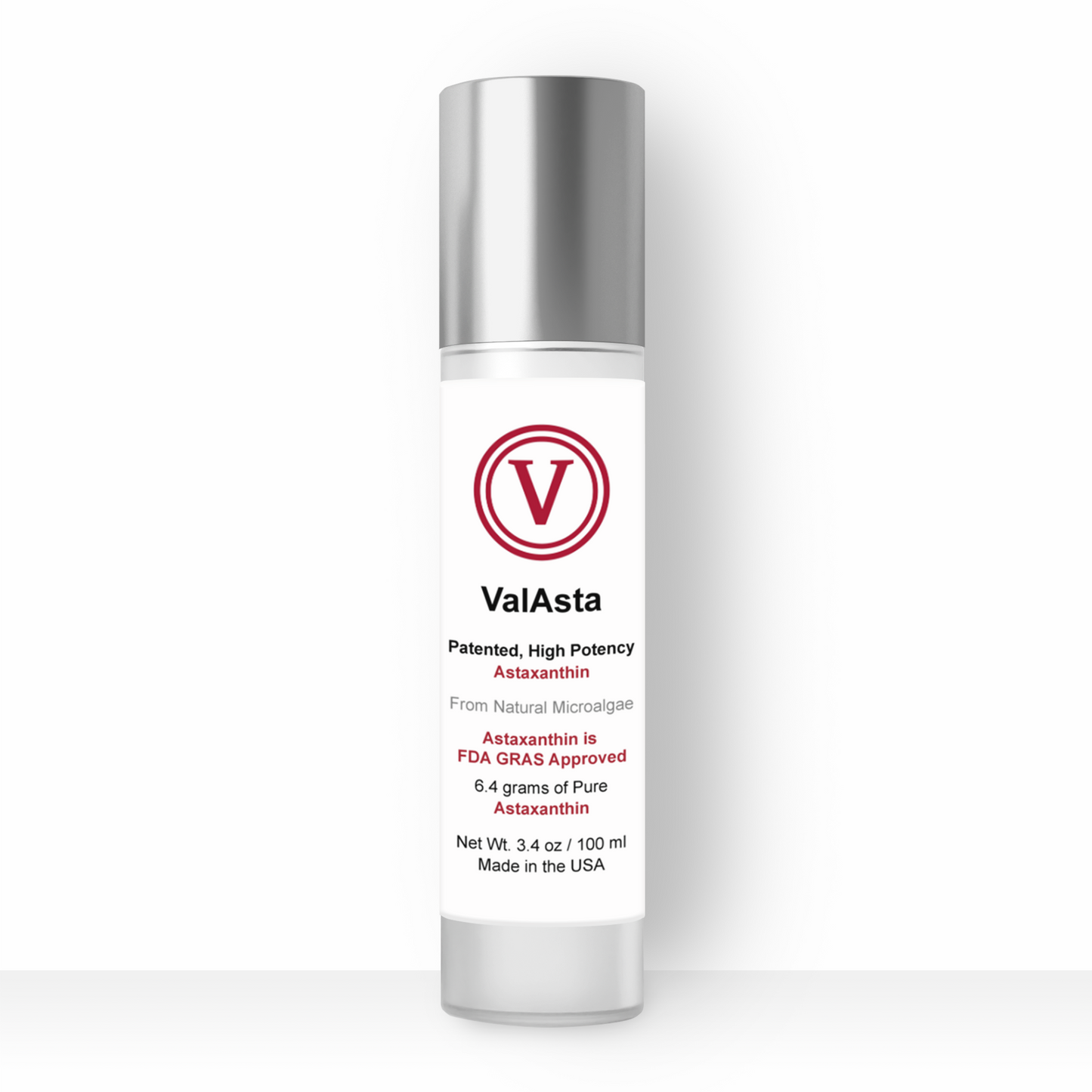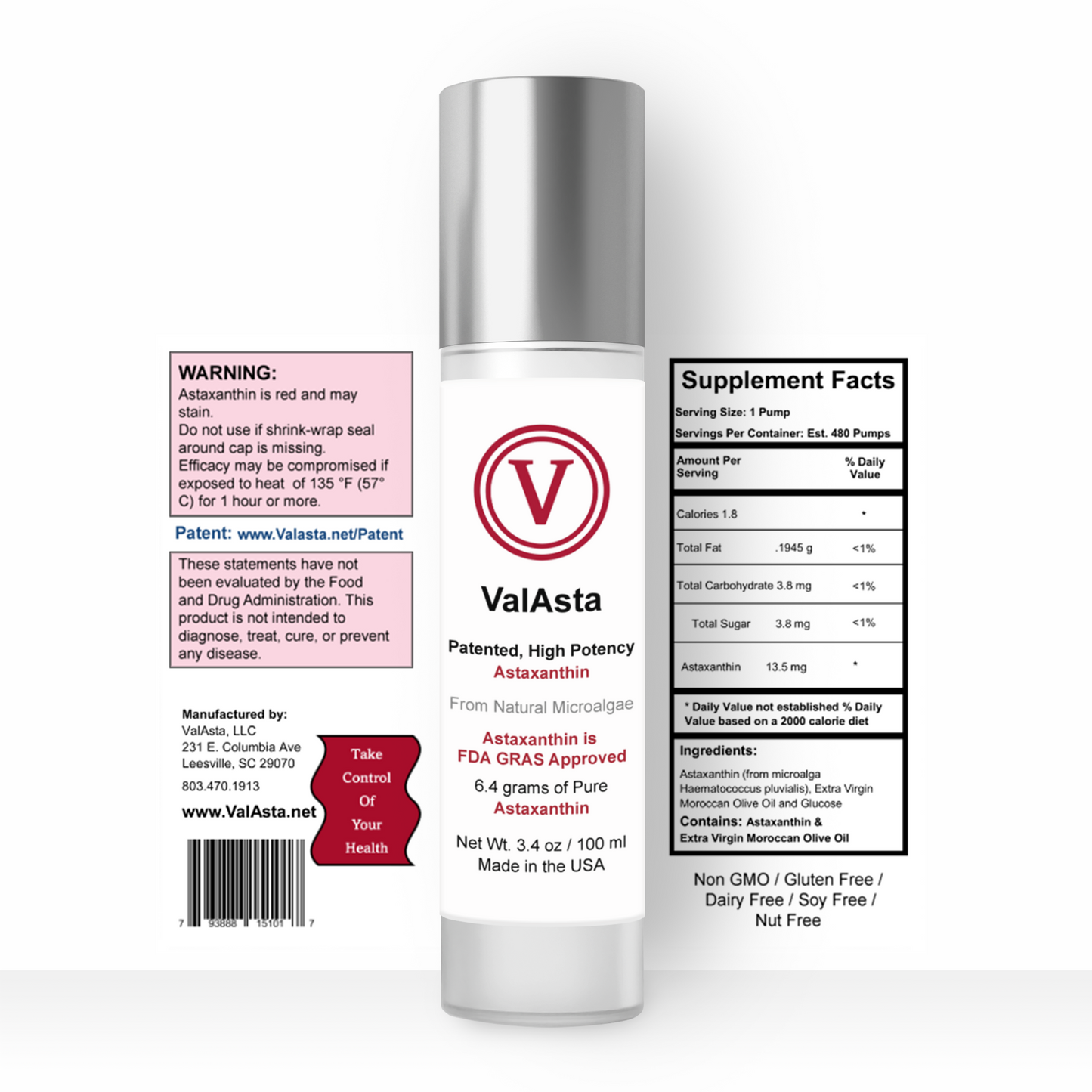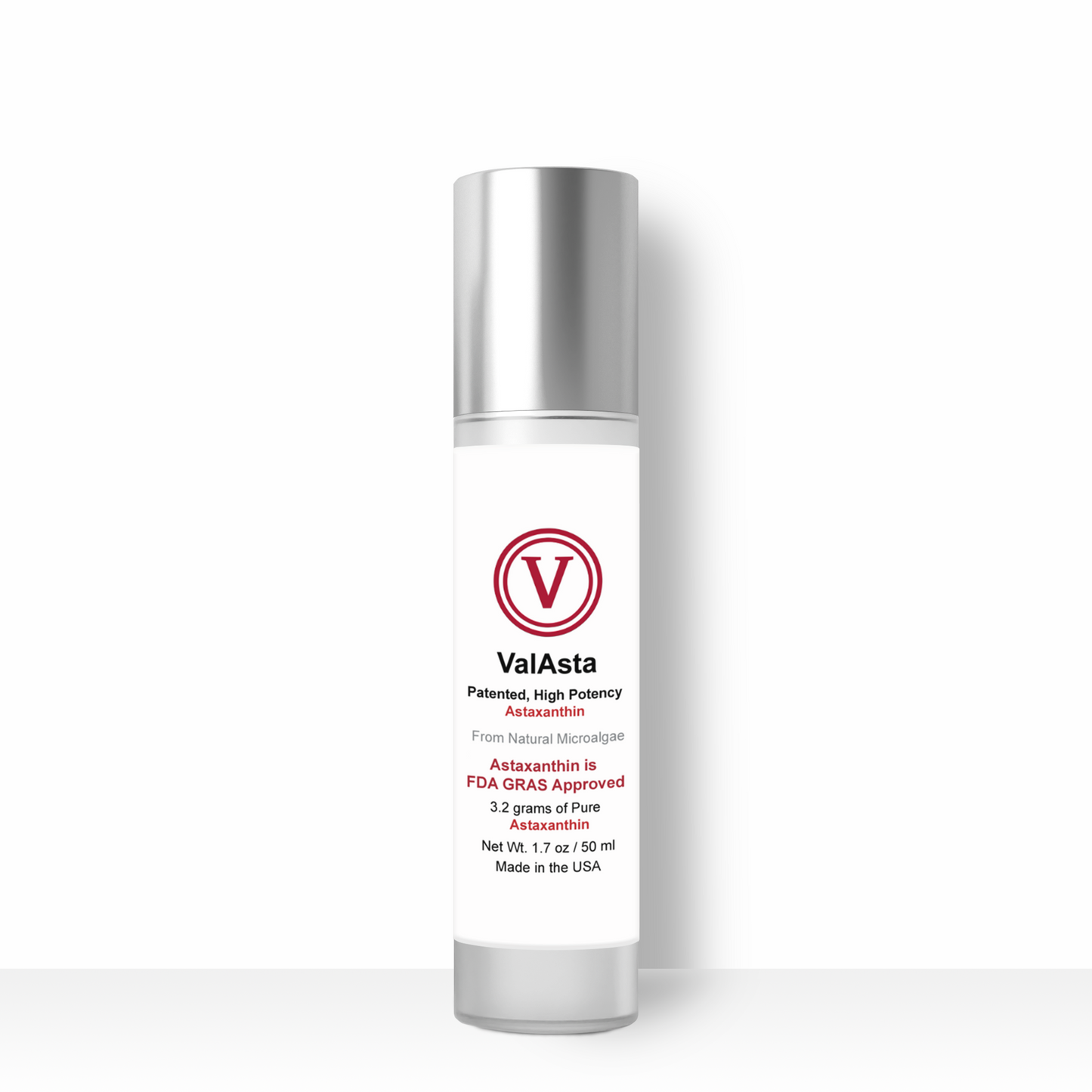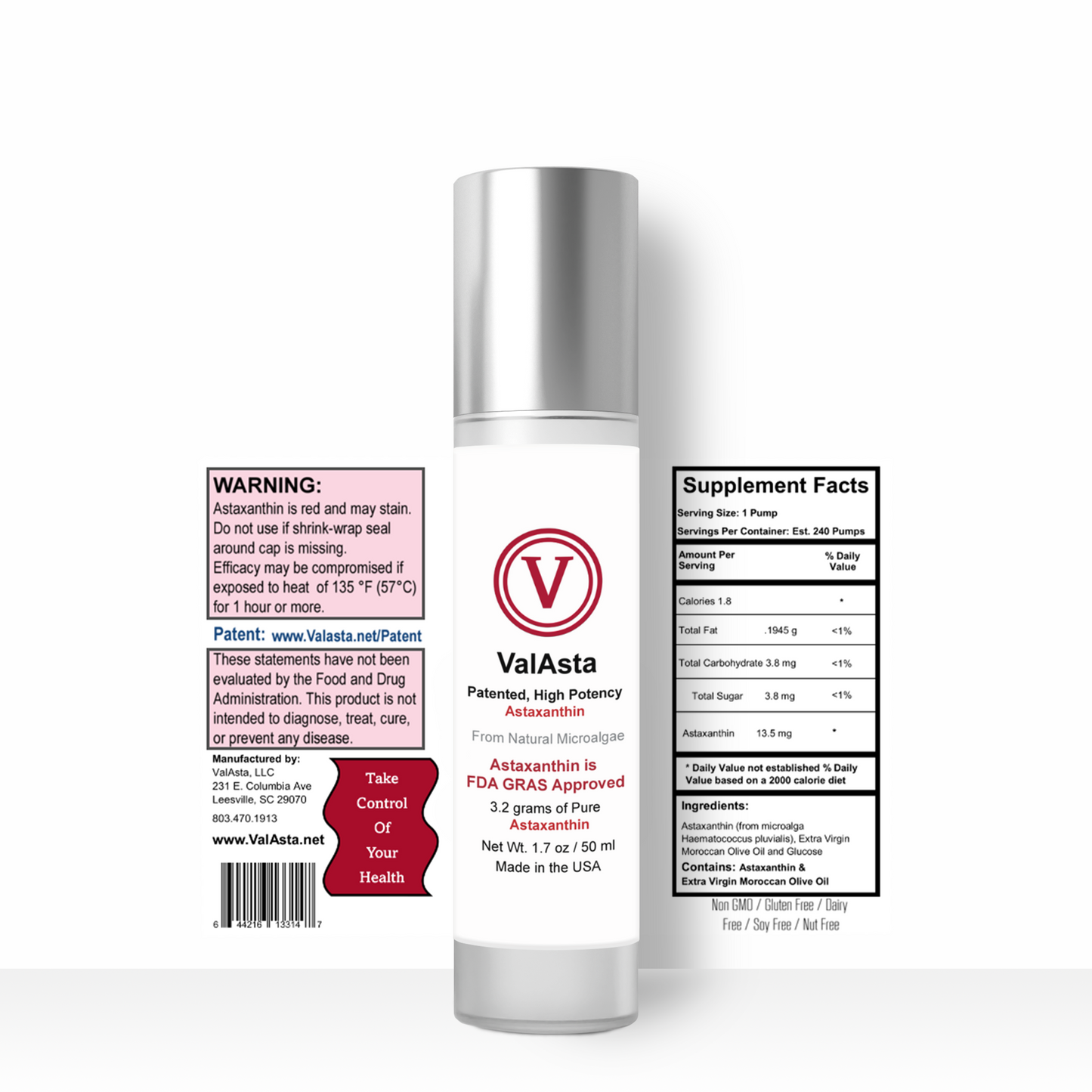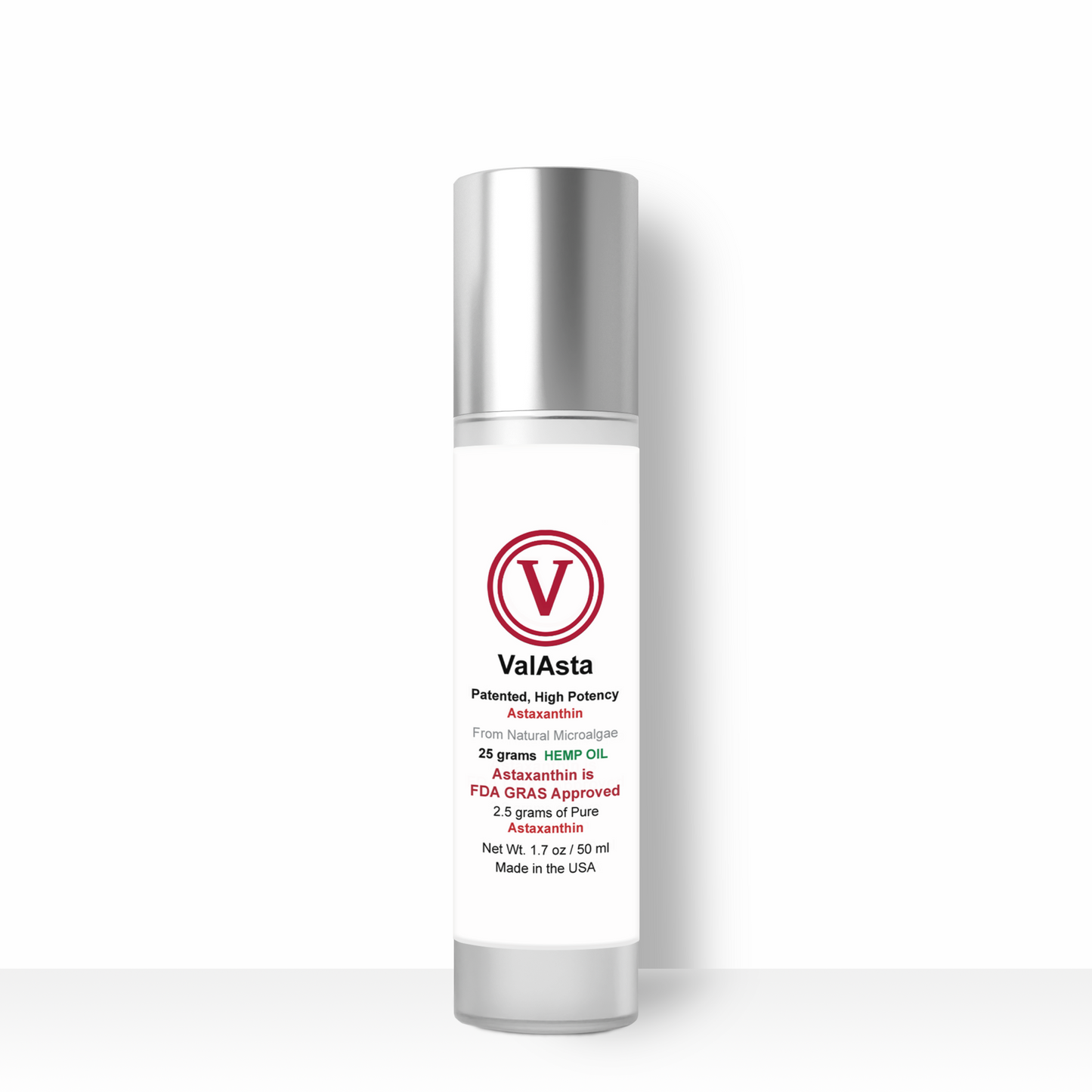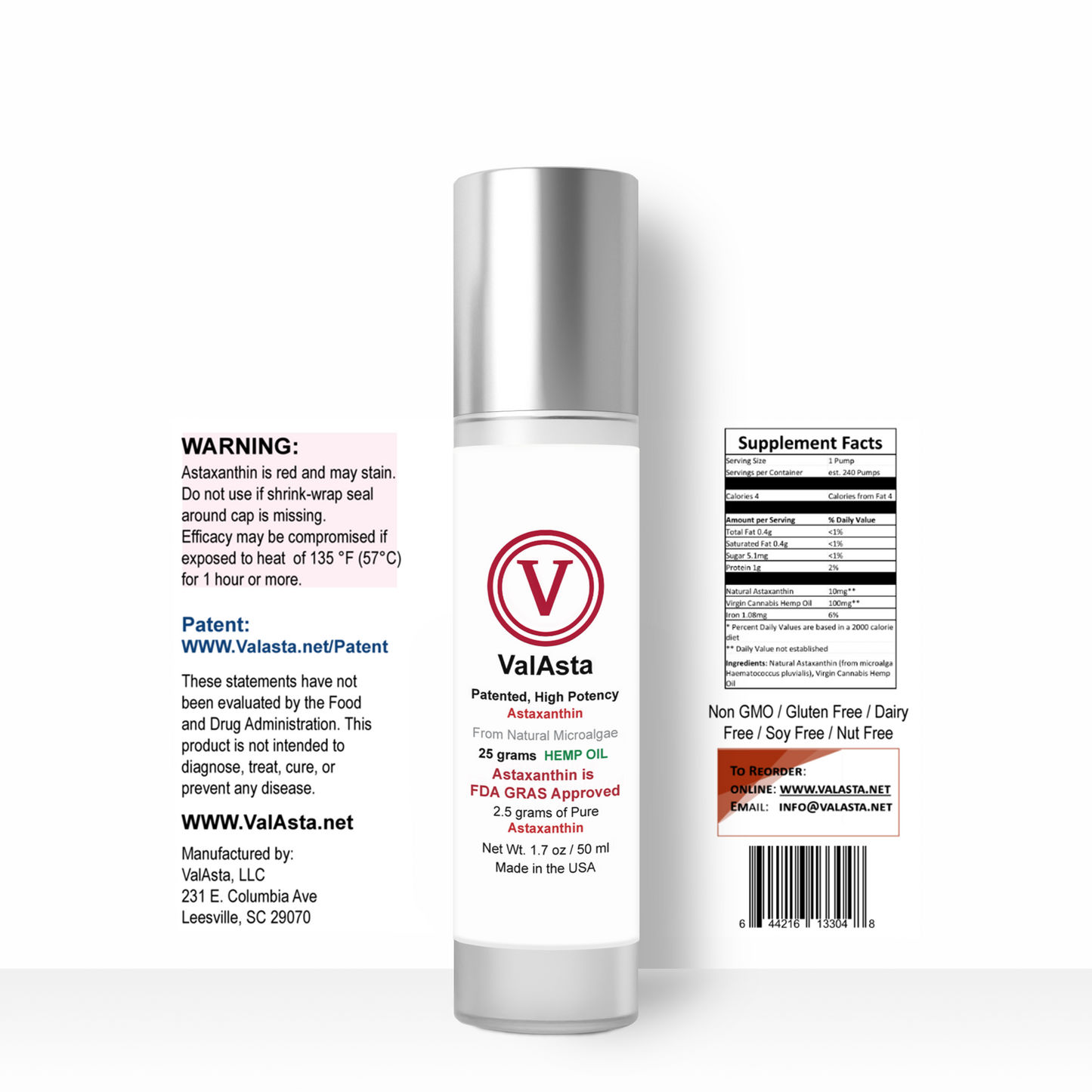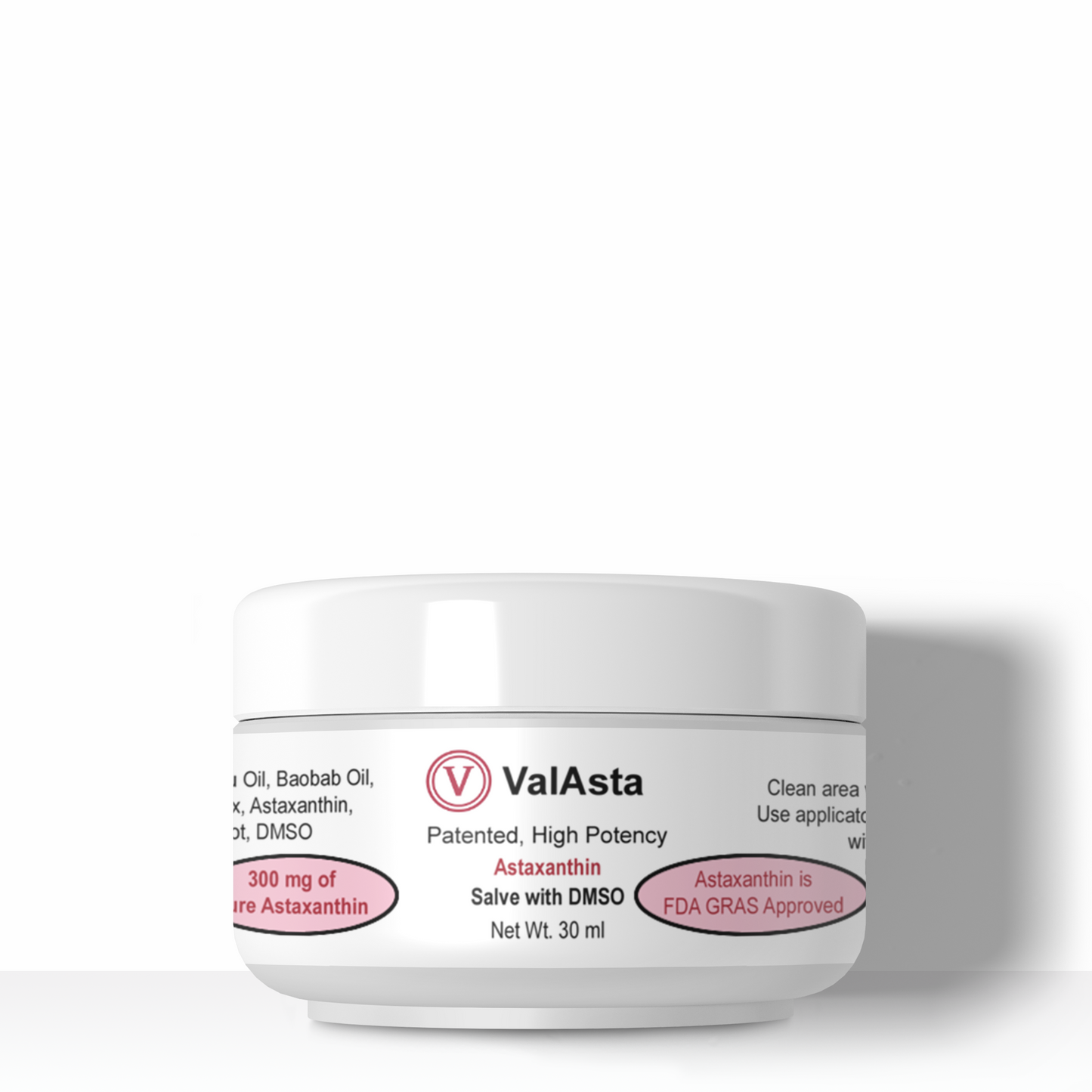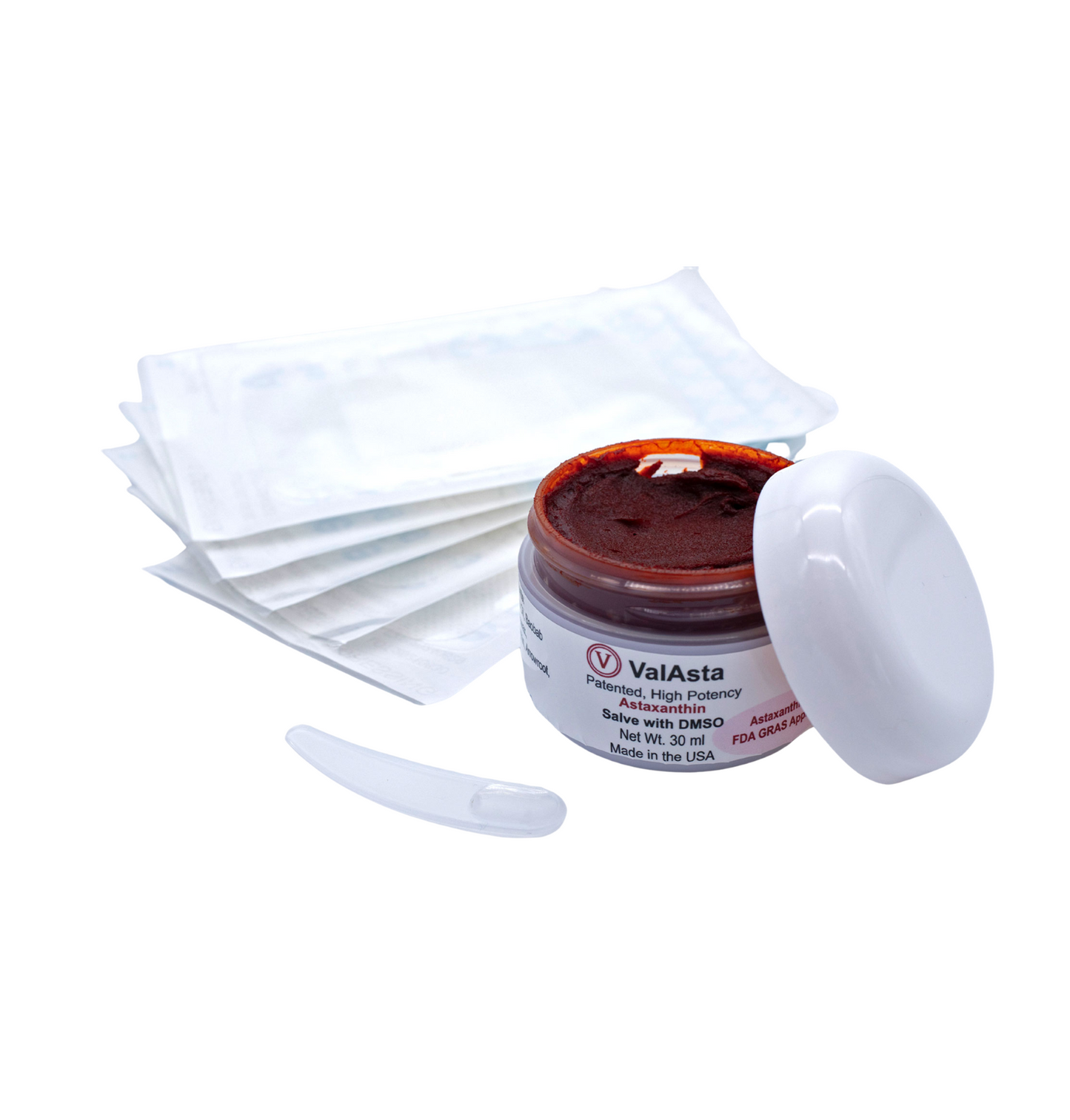
Sam Shepherd (Founder) - The serving size of ValAsta is determined from NIH animal studies and some human clinical trials. The FDA has established as a recommendation of 24 mg per serving. Since 2013, ValAsta has served over 3000 mg per day. At this serving size level, no adverse effects were observed other than red stool. The effects of the unique properties of ValAsta account for the dramatic reductions in inflammatory disease. Specifically for cancer, there are two methods at which the tumor cell is suppressed or degraded or forced into apoptosis; the first on PDL-1 expressed cancers, the tyrosine of the PDL-1 is a C-terminus. That end of the Tyrosine is highly reactive with the keto hydroxyl group of the ValAsta. This inhibits the connection between PD-1 and PDL-1 allowing for the immediate elimination of the tumor cell through auto phagocytosis. The second method of kill is in the tumor cell's ability to produce the hydroxyl free radical. The astaxanthin donates an electron and converts the free radical into a hydroxyl ion. This causes the pH of the tumor cell which is typically 5.2 to 6.8 to immediately be increased to a pH greater than 11. This rapid increase in pH kills the cancer cell in less than four seconds. It's imperative that each cell be saturated with astaxanthin, therefore, we recommend serving size at 1 mg per kilogram. We monitor the C-reactive protein and maintain a CRP of less than three to eliminate inflammatory disease.
 Made in the USA
Made in the USA
